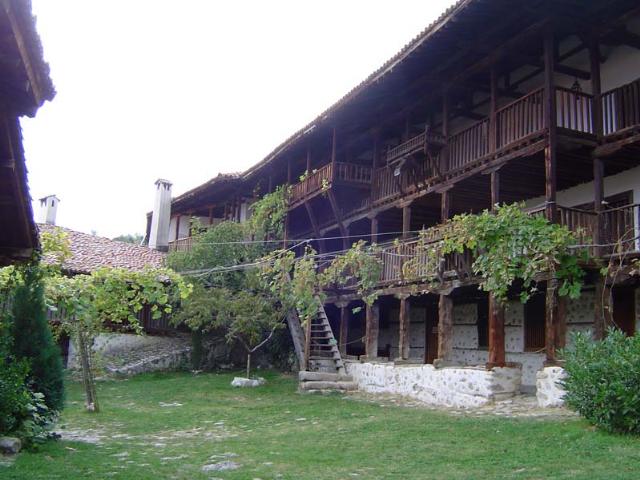Rozhen Monastery is the biggest sanctuary in the Pirin region and one of the few Bulgarian monasteries of the Middle Ages, which has survived relatively intact up to present days. According to annals kept in Athos, Greece, the monastery dates back at least to 890 AD – for comparison, the biggest monastery in Bulgaria, Rila Monastery, is believed to have started functioning in 917 AD. The church of the monastery, named "Birth of Virgin Mary", later gave its name to the nearby village of Rozhen (Rozhen coming from the root of the Bulgarian word for birth, "rozhdenie"). During the rule of Despot Aleksi Slav, governor of the region at the time of Tzar Kaloyan (1197-1207) and Kaloyan's nephew, the monastery’s complex was enriched with a number of buildings. Besides well preserved wall paintings, the monastery is famous for its stained glass (the oldest of its type preserved till present days) and unique woodcarvings. The frescoes in the monastery ossuary date from 1662. It has unique woodcarved iconostases and the church stained glass from 1715 is the only one of its kind in Bulgaria. As other monasteries, the Rozhen one also has its miraculous icon-protector, of Virgin Mary, which is kept in an ark in one of the chapels of the complex. According to the legend, the icon is one of the few copies of a sacred iron, owned by a widow of Nikea (Greece). During the times of the Byzantine’s emperor Theophilus, famous for his persecution of icon worship, the widow threw the icon in the waters in order to avoid its being destroyed by the emperor. The icon did not sink but sailed for years, until in 999 it reached the gates of the Iviron monastery in Greece.
|


